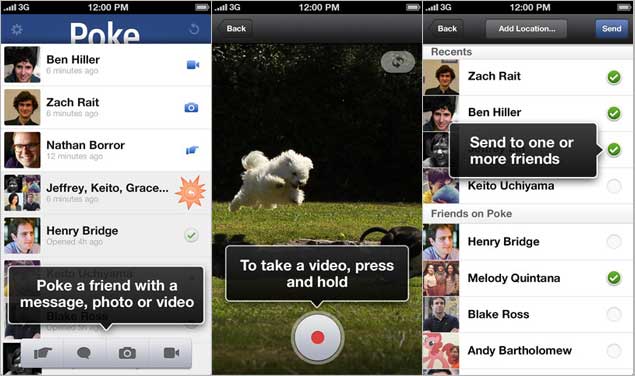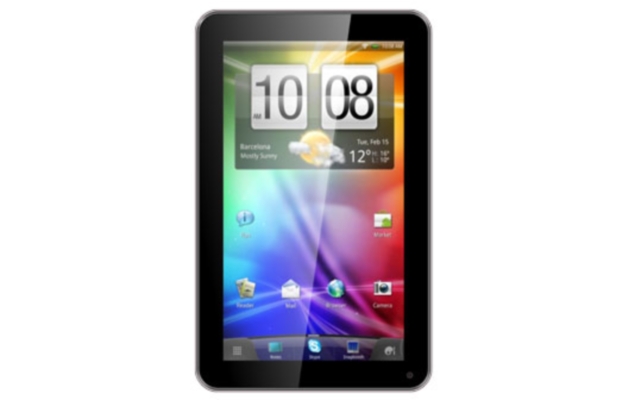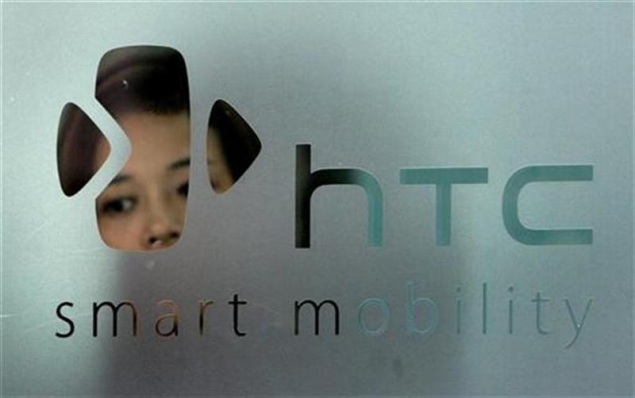venuszone.....

Android is rapidly evolving. Where will it go next?
(Credit:
Josh Long/CNET)
Brace yourselves: 2013 is upon us, and that means a whole new generation of
Android devices, rumors, and expectations.
Android will have a strong showing at
CES, and the next few months will be littered with new smartphones and
tablets. Let's take a look at some of the trends we can expect in the Android space over the coming year.
This
article will touch on many trends in the Android ecosystem, including
hardware advancements, vendor decisions, and key events of the year.
Given the sheer number of players in the space, there will be much to
look forward to in the ever-evolving Android landscape. Indeed, much
could be said about any one of these aspects of Android, but I'll
address them here in broader terms.
Screen size will sharpen and grow
Not long ago, most smartphone screens didn't exceed 4 inches. Up until the
HTC Evo 4G, most Android phones were had 3.2-inch and 3.5-inch displays. Now, thanks to popular handsets such as the
Galaxy S3 (4.8 inches) and
Galaxy Note 2 (5.5 inches), consumers are becoming used to much larger screens.

Expect more 5-inch 1080p HD Android smartphones like the Droid DNA.
(Credit:
CBS Interactive)
Motorola, for its part, has been able to squeeze a 4.3-inch
display into the body of a phone that is roughly same as a 3.5-inch
phone -- the
Droid Razr M.
I suspect this will be something that Motorola and others look to
replicate in the coming generation. Look for more press releases that
tout features such as
edge-to-edge screens or no bezel.
We'll continue to see all sorts of screen sizes in 2013, but
the standard high-end experience will fall in the vicinity of 4.5
inches. Those of us who are moving into our second and third Android
device will expect something at least as big as our current model.
Beyond size, resolution will sharpen. HTC had a leg up with the
Droid DNA with a 1080p (versus 720p) resolution, but now
nearly every handset maker
you can think of is reportedly working on their own 5-inch 1080p HD
display for their premium products. Whether you place a lot of
importance on pixel density or not, expect screen resolution to be a big
buzzword in 2013.
Quad-core will multiply
If you listen to companies such as Qualcomm and Nvidia, then you're well aware of the fact that
quad-core
is the new spec hotness, and Android is the vanguard of competition
among handset makers all vying for your little green Android dollars. Gone
are the days of big dual-core announcements. If you don't come to the
table with at least four cores of mobile prowess, then you're not really
expecting to compete on the high-end. We should anticipate that the big
devices of the coming year will have quad-core 1.5GHz processors or
higher, with some even hitting 2.0GHz by the year's end.

Handsets like the Optimus G may look antiquated in one year's time.
(Credit:
CBS Interactive)
Of course, the fight for faster processors might only be relevant on paper;
real world practicality
is a different animal. It's one thing to tout the impressive clock
speeds or point to a benchmark, but showing the benefits to end users is
the most important win.
Play a lot of 3D games? You definitely
care about who makes your phone's CPU. Just want to see what this whole
Android thing is all about? Jump in wherever you want, you'll be just
fine.
One area where we may see more improvements is in the
phone's memory and storage. If the previous year saw 2GB RAM emerge for
the top-of-the-line memory experience, next year may see us inching
toward 3GB RAM.
Storage capacities for Android phones (and all
phones) will creep up in 2013 as well, yielding 32GB as the standard for
mid-range and 64GB becoming common among high-end devices. This will be
especially true for those manufacturers opting for internal batteries
and removal of external storage, and I expect to see the first handset
with 128GB internal storage appear before 2013 is out.
Entry-level phones will benefit
You have to appreciate the trickle-down effect of technology as today's
top devices quickly become tomorrow's mid-range experience. With that
in mind, the $50-$100 Android smartphone of 2013 will be quite
an impressive piece of hardware. Dual-core
processors should become the norm for your "basic" Android phone as
single-core stuff gets pushed aside. The same may be said of the
no-contract handsets, as we'll continually get more for our money.
As
every carrier scrambles to build out its next-gen data network, 4G LTE
will be commonplace in Android smartphones. Sure, we'll get the
occasional 3G product every once in a while, but that will diminish with
time. This is not to say that 2013 will be the end of 3G Android, but
the days of touting 4G LTE as a special feature will pass.
Popularized technologies
There is
always a chance
that we'll see a 3D experience in an Android phone or two, but I have
the feeling this is one technology that won't take off. I've yet to run
into someone who wants or needs 3D graphics in their mobile device.
Sure, it's a cool feature to show off once in a while, but we're just
not ready to adopt this baby. NFC will continue to gain a foothold in Android products, maybe to the point of standardization. More companies will
push it out in the
mobile payment space and general consumers will become aware of its capabilities.
I
get the feeling that we'll see a new surge in NFC-enabled accessories
and technologies in the coming wave of tech conferences. The idea of
tap-to-play speakers or media players doesn't seem like much of a
stretch for this year's biggest mobile conferences, CES in January and
Mobile World Congress in late February.

Samsung's TecTiles are a great way to use NFC that does not revolve around mobile payment
(Credit:
CBS Interactive)
Perhaps the biggest issue facing smartphones with large displays and super-fast processors is
battery life. Nobody wants to put their phone away to preserve juice; we bought that big screen for a reason.
Looking ahead to the new year, I expect to see more handsets come with internal and/or higher capacity batteries. The
Droid Razr Maxx HD
is still the benchmark for long-lasting batteries, but we should see
the gap narrow. To that end, we may see less emphasis on "world's
thinnest" or "lightest" claims.
As many readers know, Android has given way to a number of
unique (read: goofy) form factors
over time. One design that pops up every once in a while is the
secondary screen. We may not be at the end of this occasional one-off,
however we might see fewer announcements of far-out designs over time.
The
main reason? Developers don't want to write their apps for yet another
screen layout. It also doesn't help when you have two screens with
bezels and a broken or split image. With that in mind, someone will find
a way to make a compelling experience. Unfortunately, I do not see this
happening in 2013.
One device around the world
I
cannot tell you how pleased I was when I learned that Samsung was going
to adopt one singular form factor for the Galaxy S3 and Galaxy Note 2
across countries and carriers. I'm sure that a number of accessory
makers were quite happy with the decision as well. Samsung will employ
the same strategy for the
Galaxy S4 and will likely have records sales again in the new year.
As far as other companies going this route, HTC today seems to
be the closest. I wouldn't be surprised if its next flagship model were
to hit multiple carriers with a single design. As nice as it was to
have fewer models to choose from in the One series, it was still
confusing to keep up with the various suffixes --
One X,
One X+,
Evo 4G LTE.
"Does my carrier offer that one? What's the difference between this and
that?" Along those lines, LG also seems to be slowly headed in this
direction with the
Optimus line.
Android comes to new territories
The Samsung
Galaxy Camera wasn't the first digital camera to utilize Android, but the first to tie into carriers.
Nikon,
Polaroid,
and other camera-makers will dabble a bit with Android backbones and
we'll see more smarter shooters in 2013. Pricing will need to come down
for
mass adoption; however, we will see carriers selling connected cameras in retail stores and online.
We
will also see more kid-centric tablets and devices with Android under
the hood in the next year. We might as well get used to the fact that
Toys R Us and Walmart are going to offer
$99 Android tablets.
Once
the price point of a generic, knock-off tablet, the $100-$200 price
range now offers a decent experience for most. Come this time next year,
it will not be strange to see a house with even more Android tablets
for a range of age groups. Expect more products like the
Nabi Jr (toddlers) and
Nabi XD (tweens.)
Shortly
after Android became a recognized term in the mobile space, we saw the
platform arriving in various electronic devices including
microwaves and
washing machines.
I don't think we'll find too much of that in 2013, but it would not surprise me to see a refrigerator or
appliance
with a custom touch interface that runs Android. Not a full-blown
experience, mind you, but something that gives hardware-makers more
flexibility.

2013 should bring more kid-friendly Android devices, such as the Nabi 2
(Credit:
Fufu)
Of all the places Android has been absent, I'm surprised we don't have a new generation of
Chumby or
Teddy Ruxpin
toys. I might be reaching here, but I can imagine a scenario where your
companion toy educates children or plays interactive games with them. A
front-facing camera that recognizes the child, a belly with a touch
screen, or a Pillow Pet with interactive stories seem more real than
fantasy today.
There is a chance that we'll see more Android in the automobile in 2013, but it'll have competition from
RIM's QNX OS.
This won't be a replicated tablet-like experience with full-on Google
Play support but something a little smarter than what we have today. It
is easy to picture a 7-inch display that lets users hop from stereo to
diagnostics to Google Maps.
Another area that would work well is
embedding a tablet in the back of the driver and passenger seat. With
more cars offering Wi-Fi connectivity over time, a connected device just
makes sense. Don't be surprised if someone introduces a backseat
experience that includes access to social networks as well as casual
games such as checkers for road trips. For added fun, pair your
Bluetooth game controller and dive into a 3D shooter.
The Nexus project will continue to evolve
The Nexus initiative will continue to change with the times and we'll
see more hardware with Google's official stamp of approval. With three
devices to choose from today (
Nexus 4,
Nexus 7,
Nexus 10), it isn't much of a stretch to consider that Google will want to refresh the lineup at least once a year.

LG's Google-branded Nexus 4 introduced Android 4.2 Jelly Bean.
(Credit:
Josh Miller/CNET)
Considering that there are three different companies supplying
the hardware for the Nexus line today, I would look for more of the
same down the road. Google will likely share the love with new and
returning companies in 2013 and consumers will come to know what Nexus
means.
The coming year may finally bring us a Google and
Motorola Nexus
product. As something that the industry has expected over the last
year, Google has not ruled out such an animal. In fact, all the
conversations I've read these past months seem to dance around the
topic. With no outright denial of a Motorola Nexus device, I'm reminded
of the old adage "where there's smoke there's fire." With that in mind, a
smartphone seems more plausible than a tablet at this stage.
Whether we see one-off products like the
Nexus Q in 2013 remains to be seen. I get the sense that Google like to test the waters and introduce real, working
proof-of-concept devices
just to gauge developer and consumer reactions. I won't rule out
anything like this for next year however I might expect Google to
downplay its significance or potential. Perhaps a "hey check this out,
we think you'll like it" introduction is in order.
Google I/O and major releases
If the last few years are any indicator, there will be at least five
key moments for Android in 2013, starting with trade shows: CES in early
January, the international Mobile World Congress in late February, and
CTIA in late May. Samsung is also expected to launch its
Galaxy S4 flagship phone at a standalone press event, if we follow 2012's model.

Android Jelly Bean is just the beginning.
Yet we'll see the real ecosystem-changing stuff at Google's annual developer conference, Google I/O,
in May.
So far, indicators point to an Android 5.0
Key Lime Pie.
It's tough to forecast what will be in this coming release, but I
definitely see more polish and attention to detail on the horizon, plus
more camera and mapping tricks.
Android's background OS will
continue to gain speed, and the company will introduce new features that
again pull away from iOS to set the industry pace. We don't know much
about Android 5.0 quite yet, but we'll assuredly discover bits and
pieces of upcoming features in the months just before Google I/O --
especially if Google releases a new Nexus device or two to go along with
the latest software build.
2013 will certainly be an exciting year for Android, with the mobile OS surely maintaining its mobile lead.
































